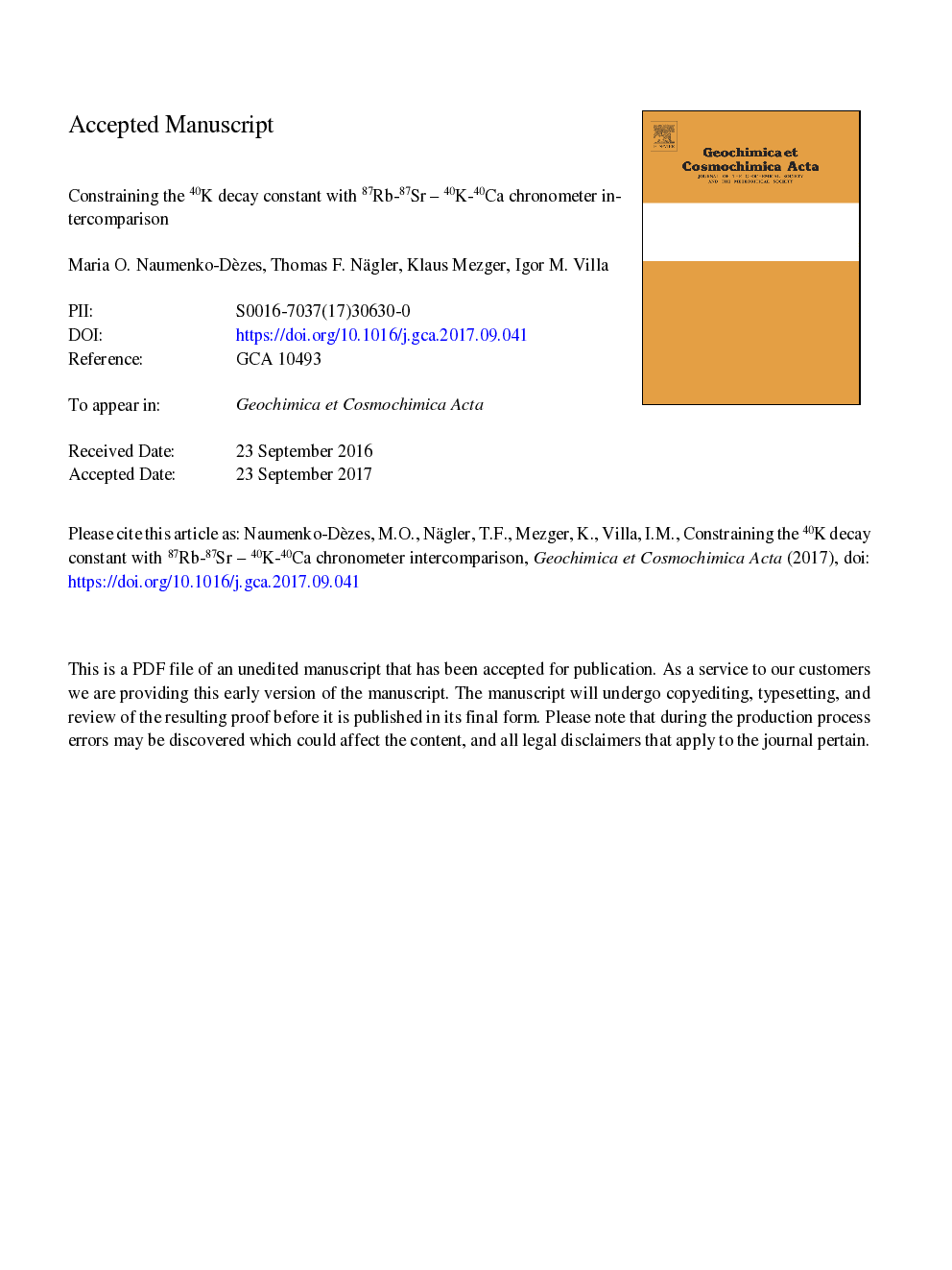| Article ID | Journal | Published Year | Pages | File Type |
|---|---|---|---|---|
| 8911018 | Geochimica et Cosmochimica Acta | 2018 | 23 Pages |
Abstract
A literature survey reveals that the K-Ar chronometer gives ages that are ca. 1% younger than U-Pb ages. This offset is generally attributed to an inaccurate 40K decay constant. Three geological samples selected from a shortlist of eight with known U-Pb ages were investigated using detailed petrological methods and subsequently the Rb-Sr and K-Ca chronometers in order (a) to evaluate if they meet the requirement of a geological history reflecting a “point-like” event (i.e. isochronous formation and subsequent ideal closure of chronometers) and (b) to narrow down the systematic uncertainty on the 40K decay constant by investigating the metrologically traceable K-Ca decay branch. Lepidolite of the Rubikon pegmatite, Namibia, was dated with Rb-Sr at 504.7 ± 4.2 Ma and the phlogopite and apatite from the Phalaborwa carbonatite complex, South Africa, yielded a Rb-Sr age of 2058.9 ± 5.2 Ma. Both Rb-Sr ages agree with published U-Pb ages. The Rb-Sr age of the late Archean Siilinjärvi carbonatite, Finland, records a later regional metamorphic event at 1869 ± 10 Ma. Only the samples from the Phalaborwa complex represent a “point-like” magmatic event and meet all the criteria to make them suitable for the 40K decay constant intercalibration. The Phalaborwa K-Ca isochron has a slope of 1.878 ± 0.012. Forcing the K-Ca isochron to coincide with the U-Pb and Rb-Sr ages gives one equation with two unknowns. Assuming that the branching ratio of the K-Ca branch, BCa, lies in the interval (k = 2) of all published references, 0.8925 < BCa < 0.8963, then the most reliable uncertainty interval (k = 2) for the total 40K decay constant, λtot, is calculated as 5.484 Ã 10â10â¯aâ1â¯<â¯Î»totâ¯<â¯5.498â¯Ãâ¯10â10â¯aâ1. This confirms that the currently used IUGS recommendation is inaccurate.
Related Topics
Physical Sciences and Engineering
Earth and Planetary Sciences
Geochemistry and Petrology
Authors
Maria O. Naumenko-Dèzes, Thomas F. Nägler, Klaus Mezger, Igor M. Villa,
